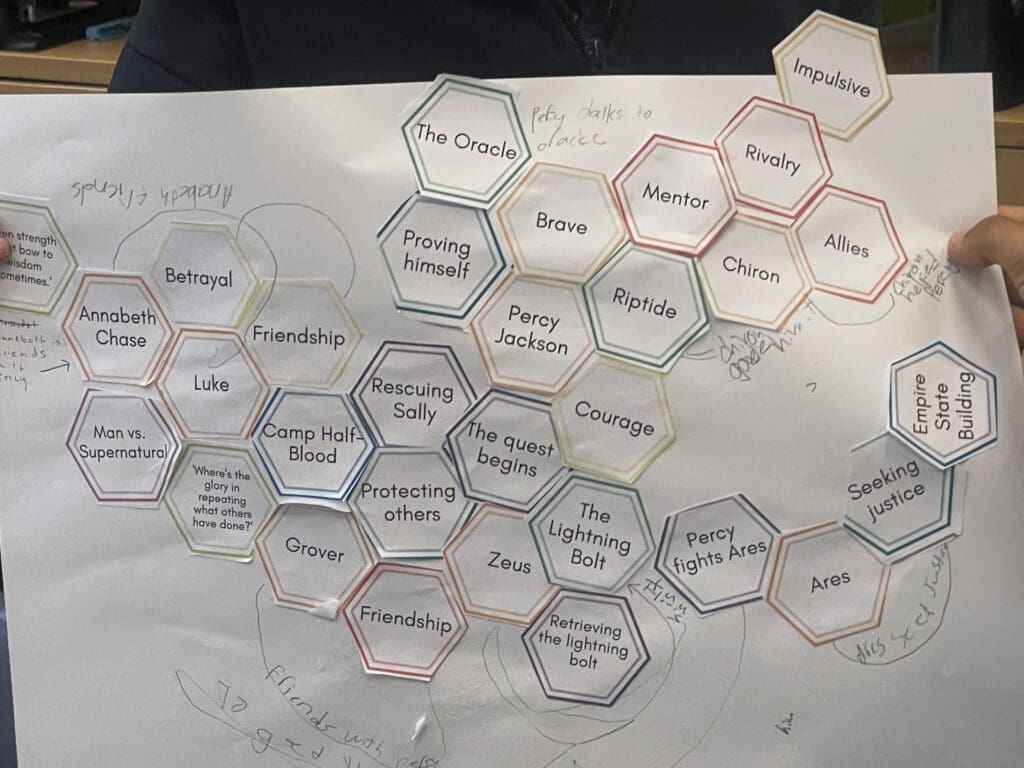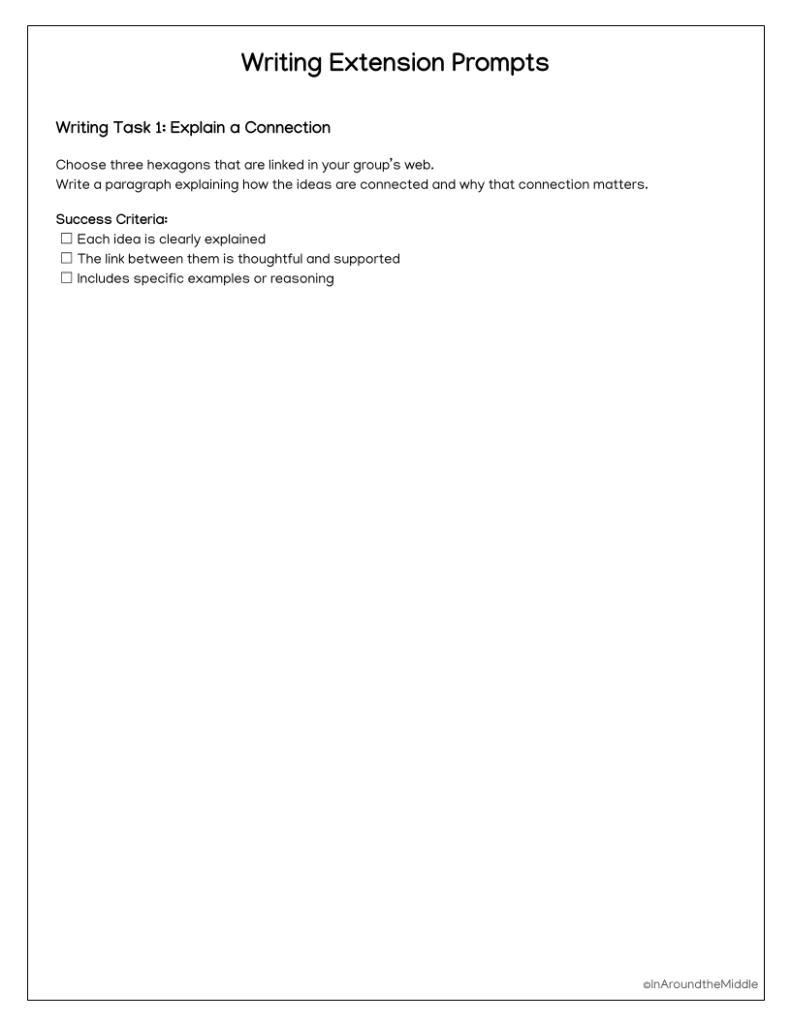Assessment Strategies for Hexagonal Thinking Templates: How to Grade the Web

Hexagonal thinking templates are one of those teaching tools that students love and teachers instantly see the value in. It sparks deep conversations, invites unexpected connections, and gets even the quieter students involved. But once students have built a web full of brilliant thinking… what now? How do you assess it?
Grading hexagonal thinking can feel tricky at first—especially when the process matters just as much as the final product. This post offers practical ways to assess both the group work and individual thinking behind those colourful webs. Spoiler alert – I’ve also included a freebie to get you started!

What Are You Really Assessing with your hexagonal thinking templates?
Before diving into rubrics or checklists, it helps to clarify what success looks like in a hex thinking activity. You might want to assess:
- The quality and originality of the connections
- How well students justify their thinking
- Use of text evidence or real-world examples
- Communication and collaboration
- Critical and creative thinking
Not every web needs a score. Some might be purely formative or used as discussion springboards. But when you do want to assess, here are five effective strategies to try.
1. Group Web Evaluation
If students are working in groups to build a shared web, start by assessing the final product. You can co-design a rubric with students or use a simple one with categories like:
- Connection quality – Are the links clear, meaningful, and explained well?
- Coverage – Does the web include a range of ideas, characters, or themes?
- Structure – Does the layout help or hinder understanding?
- Team balance – (Optional) Was there evidence of shared contribution?
You don’t need to overcomplicate this. A simple 1–4 scale with a comment or two goes a long way. Jennifer Gonzalez from Cult of Pedagogy has great tips on making rubrics more meaningful—worth a read if you’re streamlining your assessment approach.
2. Individual Role Reflections
One way to make sure every student’s thinking is seen is by assigning roles during group work. Think “connector,” “questioner,” “challenger,” “summarizer,” or any title that fits your goals.
After the activity, ask each student to reflect on:
- What role they played
- What connections or insights they contributed
- What they learned or might change next time
These short reflections make students more accountable and help you assess the process, not just the product. Bonus: they align beautifully with learning dispositions like Communicator or Critical Thinker.
3. Peer and Self Assessment of hexagonal thinking templates
Students often spot strengths and blind spots in each other’s work before we do. After webs are complete, try a quick peer feedback round using sentence stems like:
- “One connection that really made me think was…”
- “I didn’t understand this link at first, but then…”
- “I would challenge this connection because…”
You can also provide a checklist for self-assessment. Scaffolding peer feedback early and often, especially in thinking-based tasks trains students to reflect, not just react. This way it becomes a routine, not a chore.
4. Hexagonal thinking templates and Writing Extensions
The hex web doesn’t have to be the final task. In fact, it works beautifully as a bridge into writing.
Some easy extensions:
- Pick three connected hexagons and write a paragraph explaining the link
- Use your hex web as a plan for an essay, argument, or book review
- Reflect on one surprising connection and why it matters
Now you can assess using your usual writing rubric, while still giving credit to the thinking that came before. This works especially well not just in English, but in History, or even Science inquiry projects.
5. Gallery Walk + Verbal Defence
Turn your hex webs into a gallery walk. Display each group’s work around the room, and have students walk through and leave sticky note feedback or questions. You can also give groups a chance to present one part of their web or defend a controversial connection.
Prompt students with questions like:
- “Which connection was the hardest to agree on?”
- “Where did you change your mind as you built the web?”
- “What theme or idea links your strongest cluster?”
You can assess both the clarity of the presentation and the depth of responses during Q&A. It’s a powerful way to get students thinking about their thinking and build speaking skills too.
Making Assessing Hexagonal Thinking Templates All Manageable
Not every web needs a full-blown rubric. Choose what works for your goals:
- Formative use? A simple checklist and class discussion.
- Midway checkpoint? Peer feedback and self-reflection.
- Summative task? Combine the group web score with an individual reflection or writing piece.
Flexibility is key here. You’re not grading art or design—you’re capturing the thinking behind the web. The more transparent your goals are from the start, the more confident your students will be in meeting them.
Final Thoughts
Hexagonal thinking is more than a fun classroom strategy—it’s a powerful tool for deep learning. And yes, it can be assessed in meaningful, manageable ways. Whether you’re giving feedback on the fly or planning a rubric-based task, the strategies above can help you keep the focus on student thinking, not just the product on the desk.
Want to try it with your class? Grab a free sample hex web rubric and student reflection sheet below. And if you’ve found your own creative ways to assess hex thinking, I’d love to hear them!
Happy teaching









